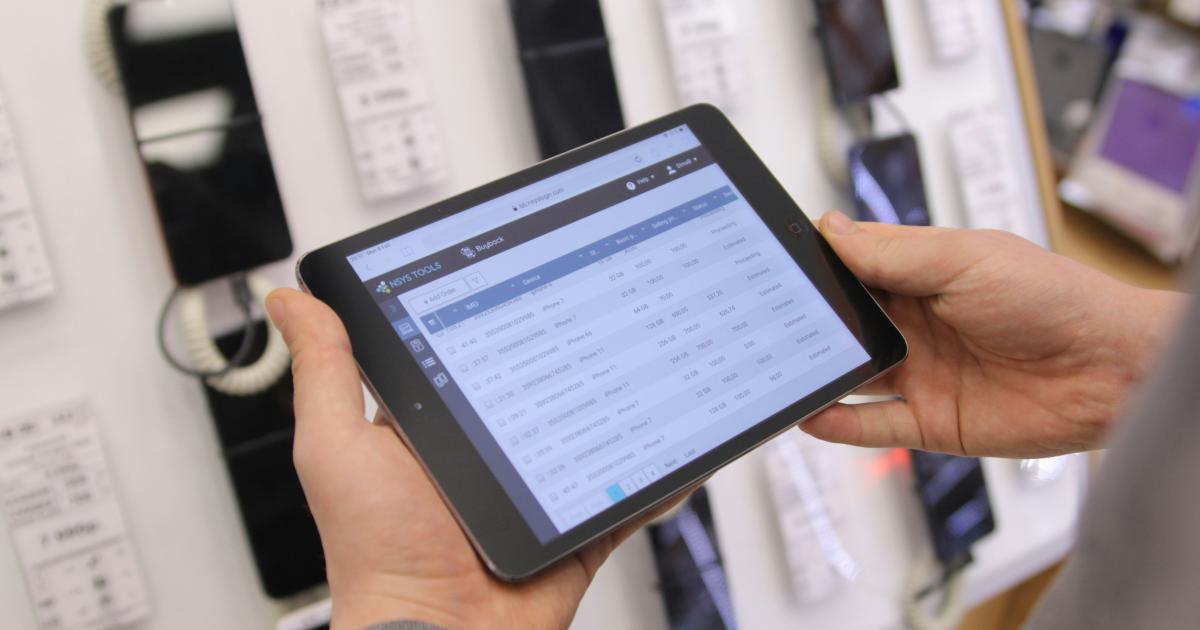Insider Tips for Managing Google Business Profile Reviews Efficiently


Mastering the Art of Responding to Google Business Profile Reviews
Maintaining a strong online presence is crucial for businesses in today's digital landscape, and managing Google Business Profile (GBP) reviews is a critical component of that. As the primary platform for customers to discover, evaluate, and engage with local businesses, GBP reviews can make or break a company's reputation and success.
Effective management of GBP reviews requires a strategic and proactive approach. By understanding the best practices and insider tips, businesses can turn this challenge into an opportunity to showcase their exceptional customer service, build trust, and drive growth.
The Importance of GBP Reviews
Google Business Profile (formerly known as Google My Business) is a powerful tool that allows businesses to manage their online presence across Google's various services, including Search, Maps, and Google+. One of the key features of GBP is the ability for customers to leave reviews, which can significantly impact a business's visibility, credibility, and ultimately, its bottom line.
Studies have shown that positive reviews can increase a business's revenue by up to 9%, while negative reviews can lead to a significant decrease in sales. Furthermore, 92% of consumers read online reviews before making a purchase decision, and 84% trust online reviews as much as personal recommendations. Clearly, GBP reviews play a crucial role in shaping a business's reputation and attracting new customers.

Responding to Positive Reviews
Responding to positive reviews is an essential part of managing your GBP presence. By acknowledging and appreciating your satisfied customers, you can strengthen your relationships, build brand loyalty, and encourage more positive reviews in the future.
Best Practices for Responding to Positive Reviews:
Timeliness: Respond to positive reviews as soon as possible, preferably within 24-48 hours. This shows your customers that you value their feedback and are actively engaged with your online presence.
Personalization: Tailor your responses to each individual review, rather than using generic, templated responses. This demonstrates that you have taken the time to read and understand the customer's experience.
Gratitude: Express genuine gratitude for the positive feedback. Acknowledge the customer's kind words and let them know that their satisfaction is important to you.
Highlight Key Points: Summarize the aspects of the customer's experience that you are most proud of, such as exceptional service, attention to detail, or a memorable visit.
Offer Additional Value: If appropriate, provide the customer with a special offer, discount, or invitation to further engage with your business, such as a loyalty program or upcoming event.
Maintain a Consistent Tone: Ensure that your responses align with your brand's voice and personality, conveying professionalism, warmth, and appreciation.

Addressing Negative Reviews
Negative reviews can be challenging to manage, but they also present an opportunity to show your commitment to customer satisfaction and turn a potentially damaging situation into a positive one.
Effective Strategies for Responding to Negative Reviews:
Act Quickly: Respond to negative reviews as soon as possible, ideally within 24 hours. This demonstrates your responsiveness and concern for the customer's experience.
Remain Calm and Professional: Avoid defensive or confrontational language, even if the review seems unfair or exaggerated. Maintain a polite, empathetic, and solution-oriented tone.
Acknowledge the Concern: Validate the customer's feelings and let them know that you take their feedback seriously. This shows that you are listening and care about their experience.
Offer a Solution: Provide a sincere apology and propose a reasonable solution or next steps to address the issue, such as a refund, a discount, or an invitation to discuss the matter further.
Take the Conversation Offline: If the issue requires more detailed discussion or sensitive information, politely invite the customer to contact you directly, either by phone, email, or a private messaging feature.
Learn from the Experience: Analyze the negative review to identify areas for improvement within your business operations, customer service, or overall customer experience.
Monitor and Follow Up: Continue to monitor the review and any subsequent interactions, and follow up with the customer to ensure the issue has been resolved to their satisfaction.

Proactive Management of GBP Reviews
Effective management of GBP reviews goes beyond simply responding to comments. Businesses should also take a proactive approach to encourage positive reviews, address potential issues, and monitor their overall online reputation.
Encouraging Positive Reviews
Actively encouraging positive reviews can help boost your business's visibility, credibility, and overall rating on Google Business Profile.
Strategies for Encouraging Positive Reviews:
Ask Satisfied Customers: Politely ask happy customers to leave a review on your GBP listing. This can be done in person, through email, or on your website or social media channels.
Provide Review Prompts: Make it easy for customers to leave a review by providing clear instructions, links, or QR codes that direct them to your GBP listing.
Offer Incentives: Consider offering small discounts, rewards, or exclusive offers to customers who leave a positive review. However, be mindful of any platform policies that may prohibit or limit such incentives.
Showcase Review Highlights: Prominently display positive reviews and testimonials on your website, social media, and other marketing materials to showcase your excellent customer service.
Respond Promptly: Responding quickly and positively to positive reviews can encourage more customers to leave their own feedback.
Leverage Review Generation Tools: Utilize review generation tools and services that automate the process of soliciting and managing customer reviews across multiple platforms.

Addressing Potential Issues
Proactively identifying and addressing potential issues can help mitigate the impact of negative reviews and maintain a positive online reputation.
Techniques for Addressing Potential Issues:
Monitor Your Listings: Regularly check your Google Business Profile listings to stay informed about new reviews, both positive and negative.
Analyze Feedback Patterns: Look for any recurring themes or issues in the reviews, and use this information to identify areas for improvement within your business.
Conduct Customer Surveys: Gather direct feedback from your customers through surveys, either on-site, via email, or through third-party platforms. This can help you uncover potential problems before they manifest as negative reviews.
Address Issues Promptly: Respond quickly to any negative reviews or customer concerns, and take immediate action to resolve the underlying problems.
Implement Quality Control Measures: Establish robust quality control processes and employee training programs to ensure consistent, high-quality customer experiences.
Leverage Google's Tools: Utilize Google's built-in tools, such as the "Suggest an Edit" feature, to proactively update your business information and address any inaccuracies on your GBP listing.

Reputation Management Strategies
Maintaining a positive online reputation goes beyond just responding to reviews. Businesses should implement comprehensive reputation management strategies to protect and enhance their brand image across various digital platforms.
Multichannel Reputation Monitoring
Effective reputation management requires monitoring your business's online presence across multiple platforms, not just Google Business Profile.
Strategies for Multichannel Reputation Monitoring:
Track Review Sites: In addition to GBP, monitor reviews on other popular platforms, such as Yelp, Facebook, TripAdvisor, and industry-specific review sites.
Monitor Social Media: Keep a close eye on your business's social media accounts, as well as any mentions or discussions about your brand on platforms like Twitter, Instagram, and LinkedIn.
Utilize Reputation Management Tools: Invest in reputation management software or services that can automatically track and analyze reviews, social media mentions, and other online conversations about your business.
Encourage Customers to Leave Reviews: Provide clear instructions and incentives for customers to leave reviews on the platforms that are most important to your business.
Respond Consistently: Maintain a consistent, professional tone when responding to reviews and mentions across all digital channels.

Reputation Crisis Management
Despite best efforts, businesses may occasionally face reputation crises, such as a sudden influx of negative reviews or a viral social media incident. Effective crisis management can help mitigate the damage and protect your brand's integrity.
Strategies for Reputation Crisis Management:
Act Quickly: Respond to negative reviews and social media posts as soon as possible, ideally within 24 hours.
Communicate Transparently: Provide clear, honest, and empathetic responses that address the customer's concerns and demonstrate your commitment to resolving the issue.
Involve Relevant Stakeholders: Coordinate with your customer service team, marketing department, and other key stakeholders to ensure a unified and consistent response.
Leverage Appropriate Channels: Respond publicly on the platform where the issue originated, but also consider reaching out to the customer directly through private messaging or other channels.
Learn and Improve: Analyze the crisis to identify areas for improvement in your customer service, operations, or online reputation management processes.
Proactively Rebuild Trust: Implement long-term strategies to rebuild trust and demonstrate your commitment to exceptional customer service, such as improving processes, offering additional support, or highlighting positive customer testimonials.

Leveraging Data and Analytics
Effective management of Google Business Profile reviews requires a data-driven approach. By leveraging analytics and insights, businesses can make informed decisions, optimize their strategies, and continuously improve their online reputation.
Analyzing Review Data
Reviewing the data and insights provided by Google Business Profile can help you better understand your customers' experiences and identify areas for improvement.
Key Metrics to Analyze:
Review Quantity: Track the total number of reviews and monitor any significant changes over time.
Review Rating: Pay attention to your overall star rating and any fluctuations, as well as the distribution of ratings (e.g., 5-star, 4-star, etc.).
Review Sentiment: Analyze the sentiment of your reviews, both positive and negative, to identify recurring themes and customer pain points.
Response Rate: Monitor the percentage of reviews that you have responded to, and aim to maintain a high response rate.
Review Sources: Understand where your reviews are coming from, whether it's Google, third-party platforms, or other sources.
Competitor Benchmarking: Compare your review metrics to those of your competitors to identify areas where you excel or need improvement.

Leveraging Insights for Optimization
By analyzing the data and insights from your GBP reviews, you can make informed decisions to optimize your online reputation management strategies.
Strategies for Leveraging Insights:
Identify Strengths and Weaknesses: Use the review data to pinpoint the areas of your business that are performing well and those that need attention.
Enhance Customer Experience: Implement changes and improvements based on customer feedback to address pain points and enhance the overall customer experience.
Refine Response Strategies: Analyze the effectiveness of your review responses and adjust your approach to be more impactful and effective.
Improve Operations: Use insights from negative reviews to identify and address operational issues within your business.
Optimize Marketing and Branding: Leverage positive reviews to enhance your marketing materials, social media presence, and overall brand messaging.
Monitor Trends and Adapt: Continuously track review data and trends over time, and adjust your strategies accordingly to stay ahead of the curve.

Emerging Trends and Future Considerations
As the digital landscape continues to evolve, businesses must stay informed about emerging trends and future considerations related to managing their Google Business Profile reviews.
The Rise of Artificial Intelligence and Automation
Advancements in artificial intelligence (AI) and automation are transforming the way businesses manage their online reviews. Tools like chatbots, natural language processing, and sentiment analysis can help streamline the review response process, identify patterns, and even generate personalized responses.
Leveraging AI and Automation:
Automated Review Response Generation: AI-powered tools can analyze reviews and generate appropriate, personalized responses based on the sentiment and content of the feedback.
Sentiment Analysis: AI algorithms can identify the overall sentiment of reviews, helping businesses prioritize and respond to negative feedback more efficiently.
Predictive Insights: Advanced analytics can identify potential issues or areas of concern based on review data, allowing businesses to proactively address problems before they escalate.
Multilingual Support: Automated translation and response capabilities can help businesses manage reviews in multiple languages, expanding their reach and customer service capabilities.
Reputation Monitoring: AI-powered reputation management tools can continuously monitor online reviews and mentions across various platforms, alerting businesses to potential crises or opportunities.

The Evolving Landscape of Online Reviews
As consumer behavior and expectations continue to evolve, businesses must adapt their review management strategies to keep pace with changing trends.
Emerging Trends in Online Reviews:
Increased Demand for Transparency: Customers are seeking more transparency from businesses, including detailed responses to negative reviews and information about how issues are being resolved.
Rise of Video and Audio Reviews: The popularity of video and audio reviews is growing, as customers seek more immersive and engaging ways to share their experiences.
Importance of Micro-Moments: Businesses must be prepared to respond to customer reviews and inquiries in real-time, as consumers increasingly expect immediate attention and resolution.
Emphasis on Sustainability and Social Responsibility: Customers are increasingly interested in a business's environmental and social impact, and these factors may influence their review behavior and purchasing decisions.
Personalization and Customization: Customers expect personalized experiences, and businesses should tailor their review management strategies to meet individual needs and preferences.

Conclusion
Effective management of Google Business Profile reviews is essential for the success and growth of any business in today's digital landscape. By implementing the strategies and best practices outlined in this article, businesses can leverage their online reviews to enhance their reputation, attract new customers, and drive sustainable growth.
From responding to positive and negative reviews, to proactively encouraging feedback and monitoring your online presence, mastering the art of GBP review management requires a comprehensive and strategic approach. By embracing data-driven insights, leveraging emerging technologies, and staying ahead of evolving trends, businesses can position themselves as industry leaders and trusted partners in the eyes of their customers.
Remember, managing your Google Business Profile reviews is an ongoing process that requires consistent effort, adaptability, and a genuine commitment to exceptional customer service. By prioritizing this critical aspect of your digital marketing strategy, you can unlock a world of opportunities and take your business to new heights.